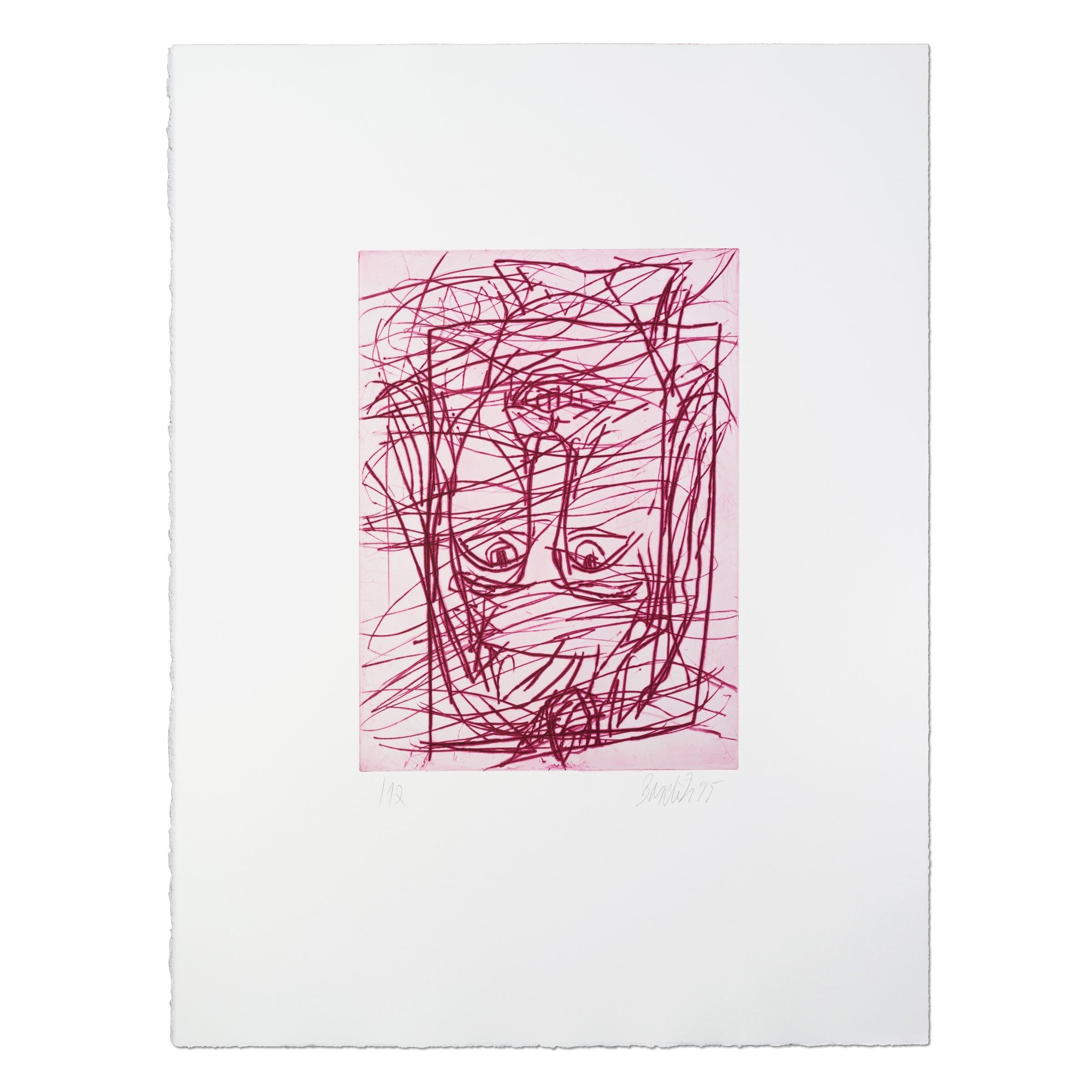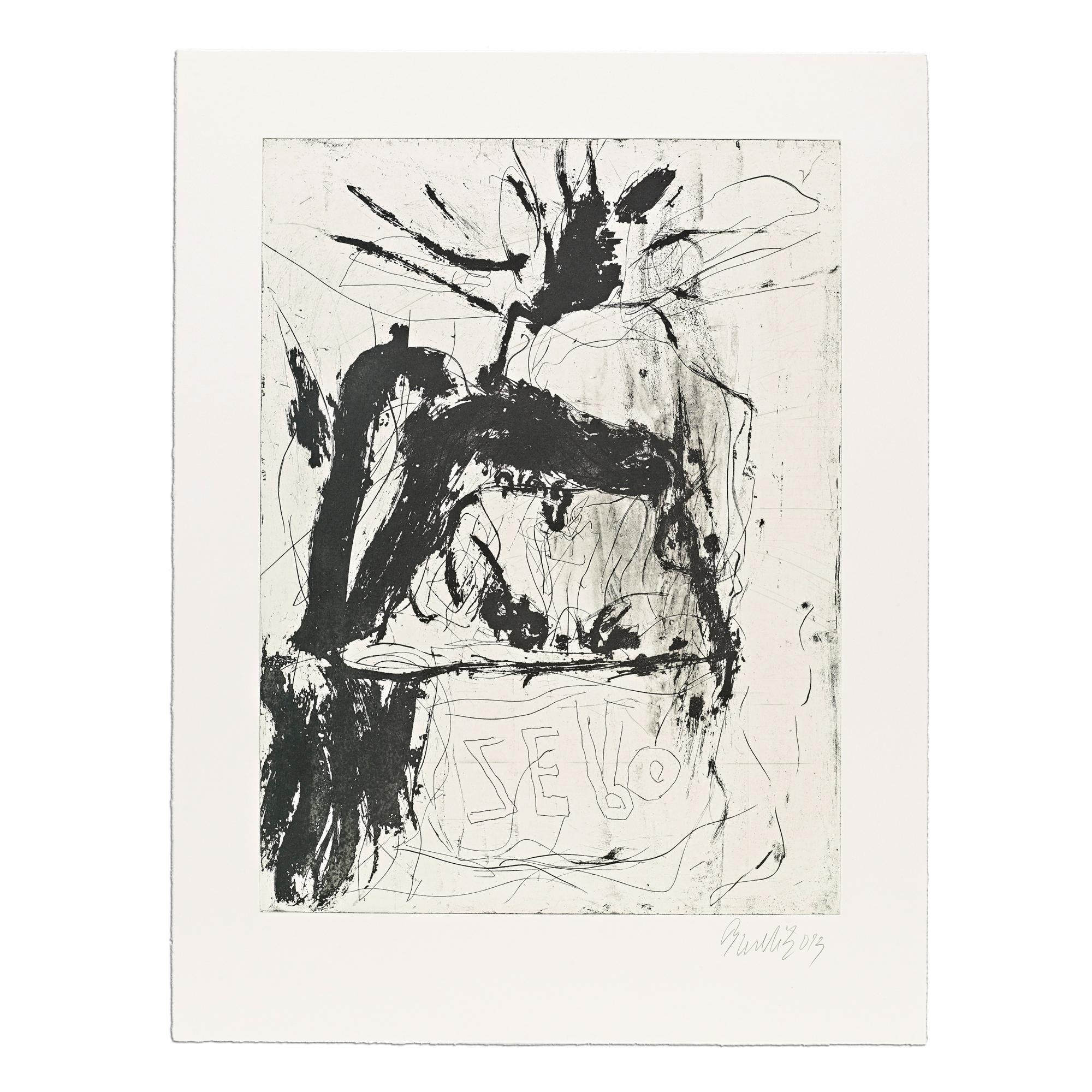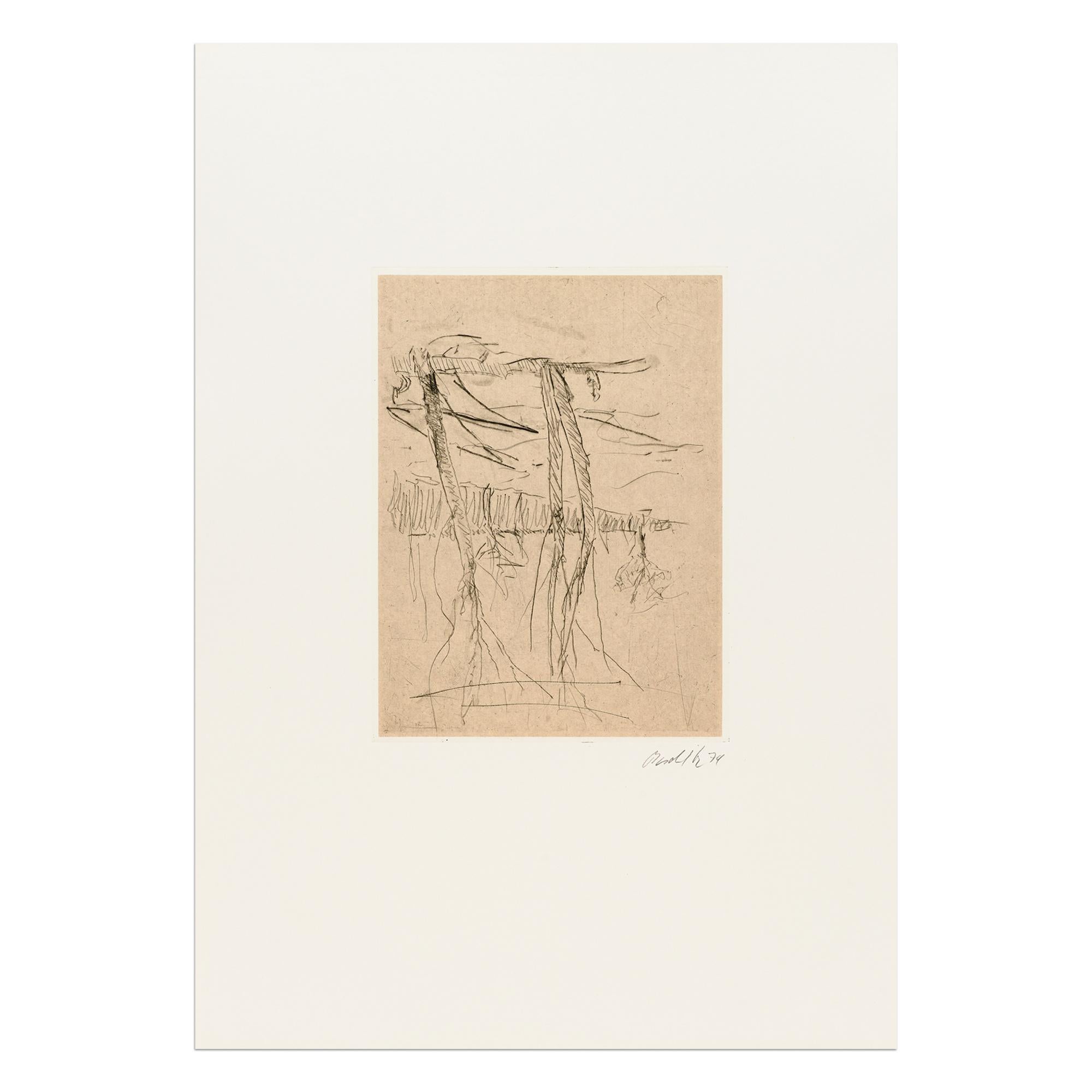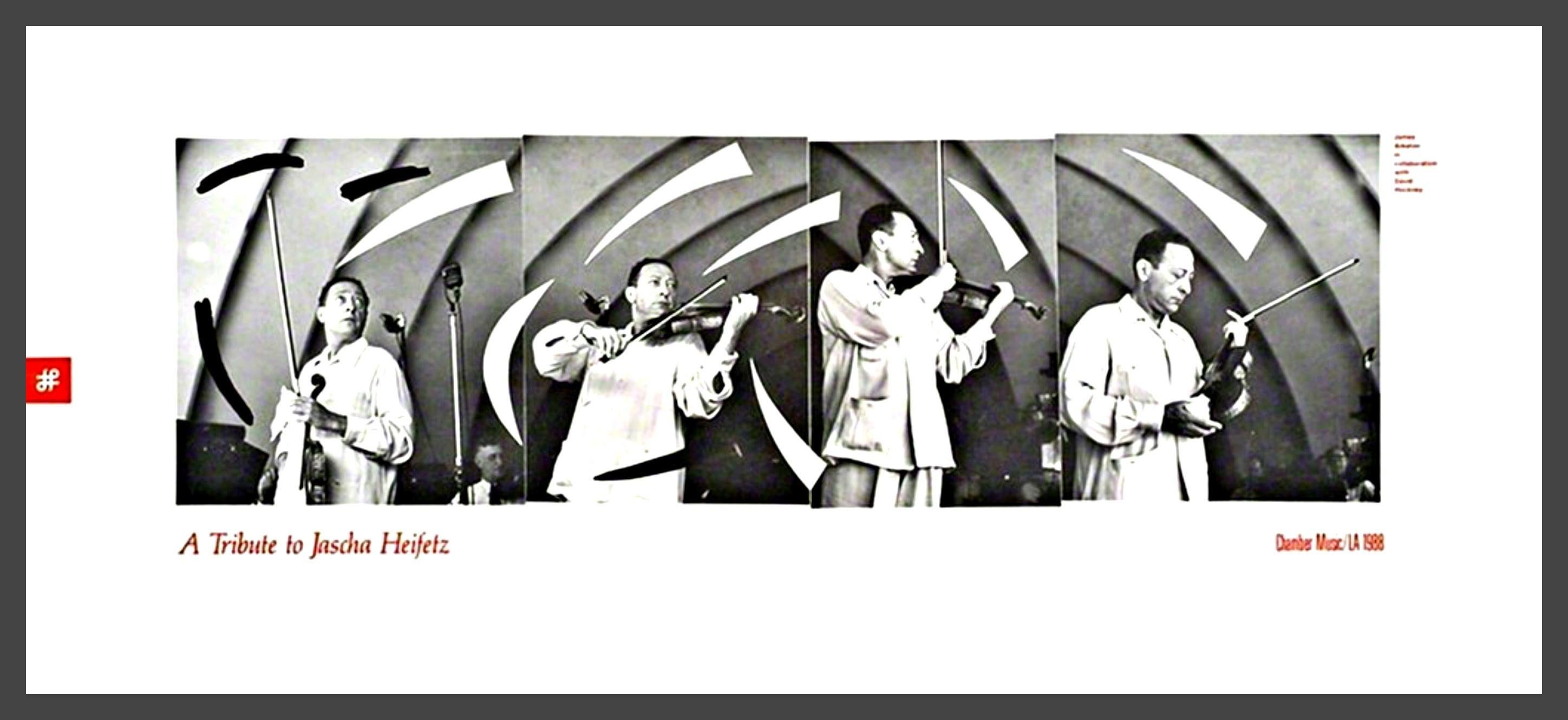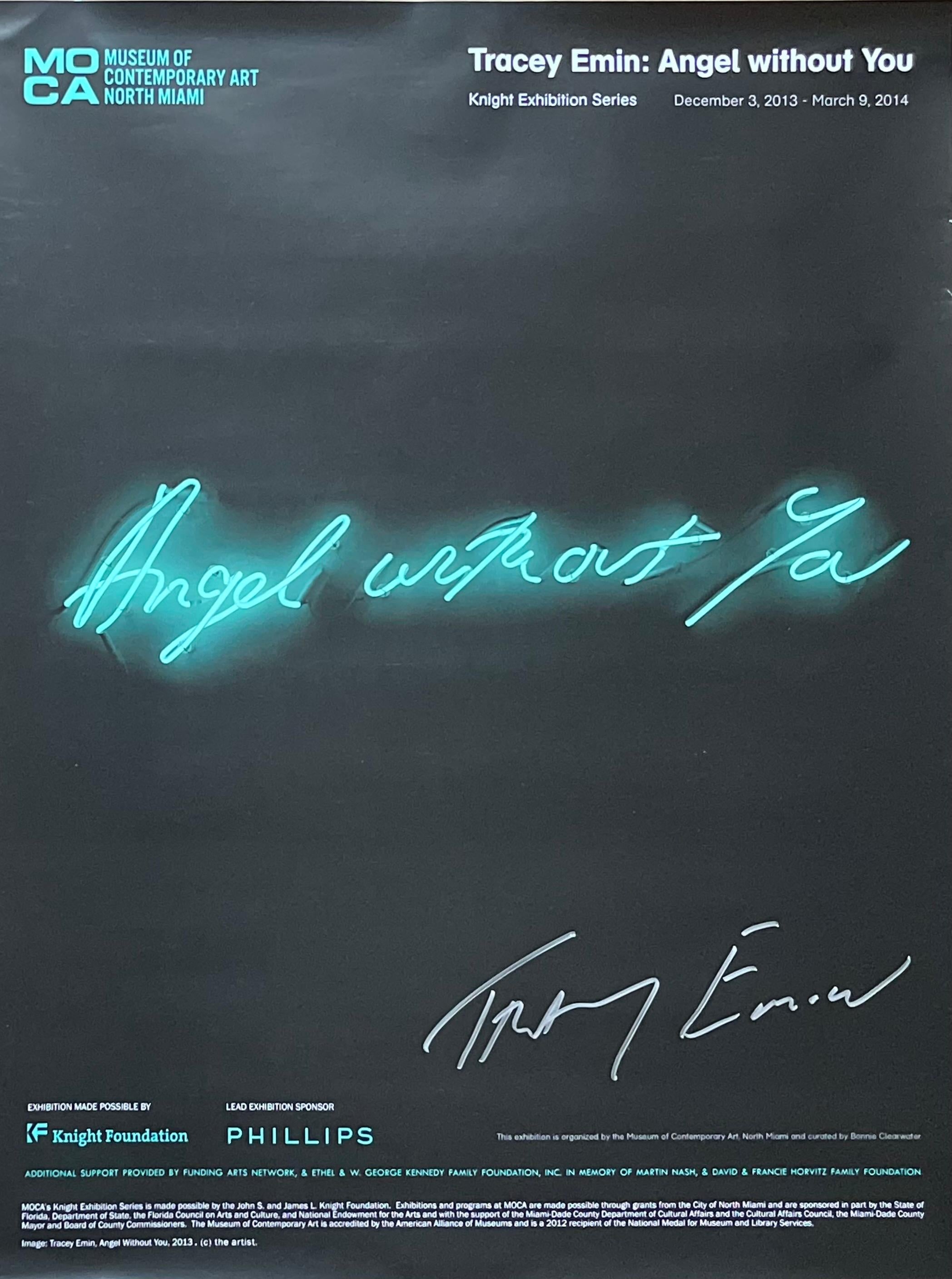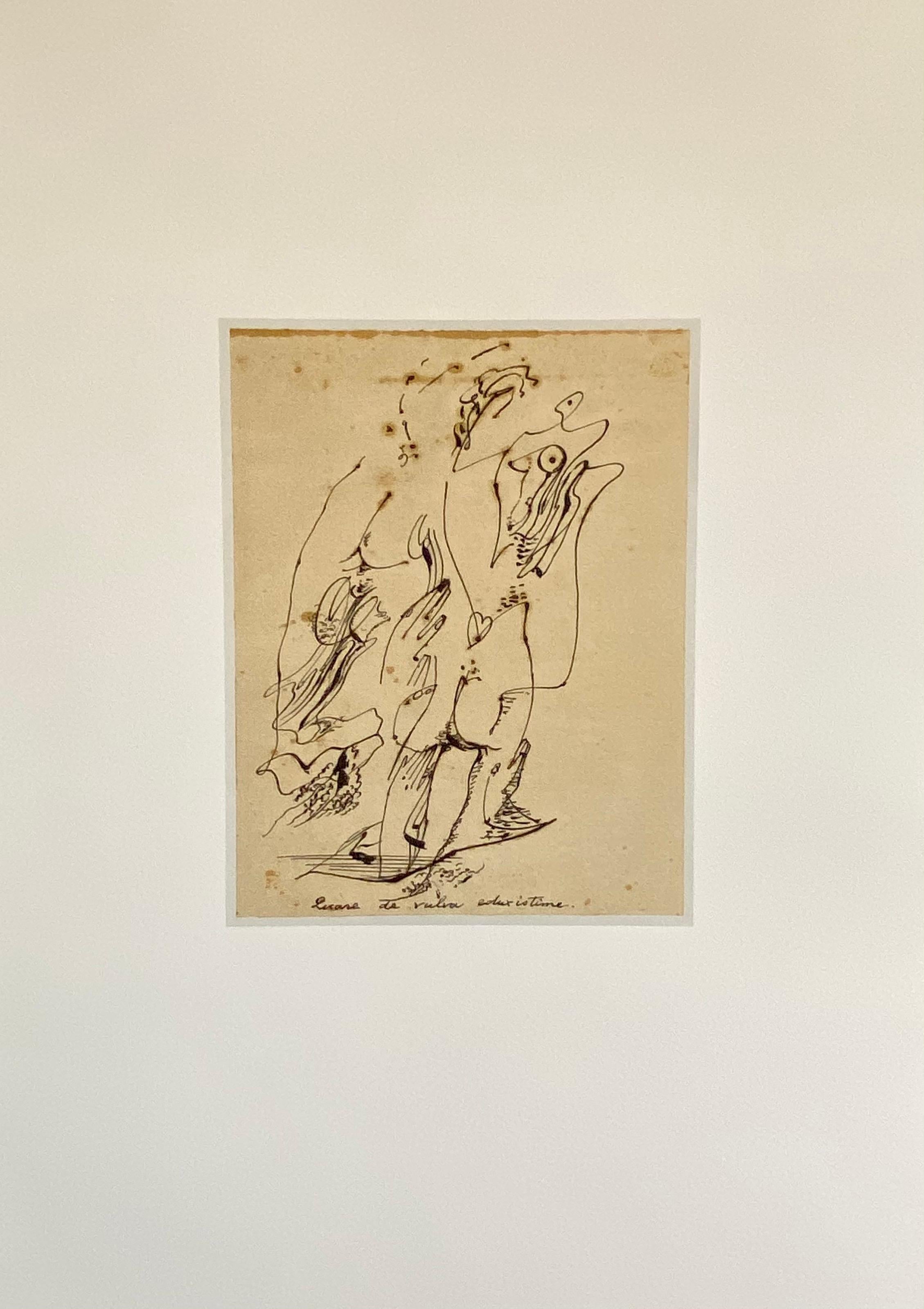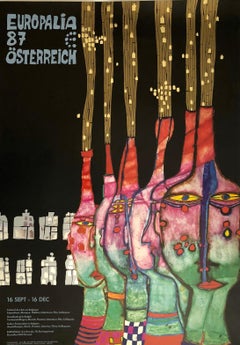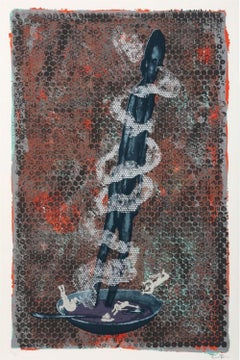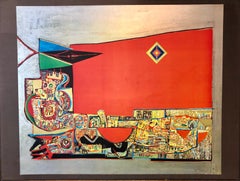
Abstract Orange Metallic Foil Print Offset Lithograph Manner of Hundertwassser
View Similar Items
Want more images or videos?
Request additional images or videos from the seller
1 of 8
UnknownAbstract Orange Metallic Foil Print Offset Lithograph Manner of Hundertwassserc.20th C
c.20th C
About the Item
- Creation Year:c.20th C
- Dimensions:Height: 29.25 in (74.3 cm)Width: 39 in (99.06 cm)
- Medium:
- Movement & Style:
- Period:
- Condition:mounted to board.
- Gallery Location:Surfside, FL
- Reference Number:1stDibs: LU3824335652
About the Seller
4.9
Platinum Seller
These expertly vetted sellers are 1stDibs' most experienced sellers and are rated highest by our customers.
Established in 1995
1stDibs seller since 2014
1,539 sales on 1stDibs
Typical response time: 1 hour
More From This SellerView All
- Vintage Europalia 87 Osterreich Metal Foil Print Offset Lithograph PosterBy Friedensreich HundertwasserLocated in Surfside, FLEuropalia 87 Oesterreich (Austria) by Friedrich Hundertwasser – original vintage poster – offset lithograph with metal foil insets fine art print Copyright by Gruener Janura AG, Glarus/ Switzerland. Printed in Germany. Europalia 87 Oesterreich 16 Sept - 16 Dec Festival des Arts en Belgique. Original poster designed by Hundertwasser, printed with 9-colour offset lithographic process, Gold and Silver metal foil insets. Friedensreich Fritz Hundertwasser was born in Vienna in 1928 as Friedrich Stowasser. He initially gained acclaim for his paintings, but is currently more renowned for his unique architectural stylings. His revolutionary ecological stands with regard to architecture have earned him the nickname Architecture Healer. His works have been used for flags and stamps, coins and posters, schools and churches. The galerie Peithner Lichtenfels showed his work. Artists present at the opening exhibition included Adolf Frohner...Category
1980s Neo-Expressionist Figurative Prints
MaterialsOffset
- Large Silkscreen Serigraph Neo Figurative Expressionist Print Jorg ImmendorffBy Jörg ImmendorfLocated in Surfside, FLJorg Immendorff (German, 1945-2007) Untitled, Germany, 2006 serigraph hand signed and dated lower right margin, numbered 20/27 lower left framed 74.5 x...Category
Early 2000s Neo-Expressionist Abstract Prints
MaterialsScreen
- French Abstract Surrealist Color Lithograph Andre MassonBy André MassonLocated in Surfside, FLPublished Benincasa Carmine. Edizioni SEAT, Torino, Italy. Offset directly from the original plates. Limited edition. This is not hand signed or numbered. Signature in the printing plate. Size is of the full sheet. André-Aimé-René Masson (4 January 1896 – 28 October 1987) was a French artist. Masson was born in Balagny-sur-Thérain, Oise, but when he was eight his father's work took the family first briefly to Lille and then to Brussels. He began his study of art at the age of eleven at the Académie Royale des Beaux-Arts in Brussels, under the guidance of Constant Montald, and later he studied in Paris. He fought for France during World War I and was seriously injured. His early works display an interest in cubism. He later became associated with surrealism, and he was one of the most enthusiastic employers of automatic drawing, making a number of automatic works in pen and ink. Masson would often force himself to work under strict conditions, for example, after long periods of time without food or sleep, or under the influence of drugs. He believed forcing himself into a reduced state of consciousness would help his art be free from rational control, and hence get closer to the workings of his subconscious mind. Masson experimented with altered states of consciousness with artists such as Antonin Artaud, Michel Leiris, Joan Miro, Georges Bataille, Jean Dubuffet, and Georges Malkine, who were neighbors of his studio in Paris. From around 1926 he experimented by throwing sand and glue onto canvas and making oil paintings based around the shapes that formed. By the end of the 1920s, however, he was finding automatic drawing rather restricting, and he left the surrealist movement and turned instead to a more structured style, often producing works with a violent or erotic theme, and making a number of paintings in reaction to the Spanish Civil War (he associated once more with the surrealists at the end of the 1930s). Under the German occupation of France during World War II, his work was condemned by the Nazis as degenerate. With the assistance of Varian Fry in Marseille, Masson escaped the Nazi regime on a ship to the French island of Martinique from where he went on to the United States. Upon arrival in New York City, U.S. customs officials inspecting Masson's luggage found a cache of his erotic drawings. Denouncing them as pornographic, they ripped them up before the artist's eyes. Living in New Preston, Connecticut his work became an important influence on American abstract expressionists, In particular Arshile Gorky drew on it, as did Jackson Pollock and Mark Rothko. Following the war, he returned to France and settled in Aix-en-Provence where he painted a number of landscapes. Masson drew the cover of the first issue of Georges Bataille's review, Acéphale, in 1936, and participated in all its issues until 1939. His brother-in-law, the psychoanalyst Jacques Lacan...Category
20th Century Surrealist Abstract Prints
MaterialsLithograph, Offset
- French Abstract Surrealist Color Lithograph Andre MassonBy André MassonLocated in Surfside, FLPublished Benincasa Carmine. Edizioni SEAT, Torino, Italy. Offset directly from the original plates. Limited edition. This is not hand signed or numbered. Signature in the printing p...Category
20th Century Surrealist Abstract Prints
MaterialsLithograph, Offset
- French Abstract Surrealist Color Lithograph Andre MassonBy André MassonLocated in Surfside, FLPublished Benincasa Carmine. Edizioni SEAT, Torino, Italy. Offset directly from the original plates. Limited edition. This is not hand signed or numbered. Signature in the printing p...Category
20th Century Surrealist Abstract Prints
MaterialsLithograph, Offset
- French Abstract Surrealist Color Lithograph Andre MassonBy André MassonLocated in Surfside, FLPublished Benincasa Carmine. Edizioni SEAT, Torino, Italy. Offset directly from the original plates. Limited edition. This is not hand signed or numbered. Signature in the printing plate. Size is of the full sheet. André-Aimé-René Masson (4 January 1896 – 28 October 1987) was a French artist. Masson was born in Balagny-sur-Thérain, Oise, but when he was eight his father's work took the family first briefly to Lille and then to Brussels. He began his study of art at the age of eleven at the Académie Royale des Beaux-Arts in Brussels, under the guidance of Constant Montald, and later he studied in Paris. He fought for France during World War I and was seriously injured. His early works display an interest in cubism. He later became associated with surrealism, and he was one of the most enthusiastic employers of automatic drawing, making a number of automatic works in pen and ink. Masson would often force himself to work under strict conditions, for example, after long periods of time without food or sleep, or under the influence of drugs. He believed forcing himself into a reduced state of consciousness would help his art be free from rational control, and hence get closer to the workings of his subconscious mind. Masson experimented with altered states of consciousness with artists such as Antonin Artaud, Michel Leiris, Joan Miro, Georges Bataille, Jean Dubuffet, and Georges Malkine, who were neighbors of his studio in Paris. From around 1926 he experimented by throwing sand and glue onto canvas and making oil paintings based around the shapes that formed. By the end of the 1920s, however, he was finding automatic drawing rather restricting, and he left the surrealist movement and turned instead to a more structured style, often producing works with a violent or erotic theme, and making a number of paintings in reaction to the Spanish Civil War (he associated once more with the surrealists at the end of the 1930s). Under the German occupation of France during World War II, his work was condemned by the Nazis as degenerate. With the assistance of Varian Fry in Marseille, Masson escaped the Nazi regime on a ship to the French island of Martinique from where he went on to the United States. Upon arrival in New York City, U.S. customs officials inspecting Masson's luggage found a cache of his erotic drawings. Denouncing them as pornographic, they ripped them up before the artist's eyes. Living in New Preston, Connecticut his work became an important influence on American abstract expressionists, In particular Arshile Gorky drew on it, as did Jackson Pollock and Mark Rothko. Following the war, he returned to France and settled in Aix-en-Provence where he painted a number of landscapes. Masson drew the cover of the first issue of Georges Bataille's review, Acéphale, in 1936, and participated in all its issues until 1939. His brother-in-law, the psychoanalyst Jacques Lacan...Category
20th Century Surrealist Abstract Prints
MaterialsLithograph, Offset
You May Also Like
- Georg Baselitz, Schwester Rosi III - Signed Print, Contemporary ArtBy Georg BaselitzLocated in Hamburg, DEGeorg Baselitz (German, b. 1938) Schwester Rosi III, 1995/1996 Medium: Drypoint etching on wove paper Dimensions: 80 x 60 cm Edition of 12: Hand-signed and numbered Condition: ExcellentCategory
20th Century Neo-Expressionist Figurative Prints
MaterialsEtching, Drypoint
- Georg Baselitz, Farewell Bill #7 - Signed Print, Edition of 15, Abstract ArtBy Georg BaselitzLocated in Hamburg, DEGeorg Baselitz (German, b. 1938) Untitled #7 (from Farewell Bill), 2013 Medium: Aquatint and line etching on wove paper Dimensions: 85.1 x 64.9 cm Edition of 15: Hand-signed and numb...Category
21st Century and Contemporary Neo-Expressionist Abstract Prints
MaterialsEtching, Aquatint
- Circle, Smoke and BraidBy Christopher BrownLocated in San Francisco, CAArtist: Christopher Brown (1951- ) Title: Circle, Smoke and Braid Date: 1990 Medium: Color woodcut in 28 colors Image Size: 37 x 30.5 inches Sheet size: 42.5 x 35.5 inches Framed size: 52.5 x 44.5 inches Signature: signed, dated lower right Publisher: Experimental Workshop, San Francisco Edition: 40 This one: 27/40 This large woodcut...Category
1990s Neo-Expressionist Abstract Prints
MaterialsColor, Woodcut
- Georg Baselitz, Farewell Bill #4 - Signed Print, Edition of 15, Abstract ArtBy Georg BaselitzLocated in Hamburg, DEGeorg Baselitz (German, b. 1938) Untitled #4 (from Farewell Bill), 2013 Medium: Aquatint and line etching on wove paper Dimensions: 85.1 x 64.9 cm Edition of 15: Hand-signed and numb...Category
21st Century and Contemporary Neo-Expressionist Abstract Prints
MaterialsEtching, Aquatint
- Georg Baselitz, Bäume - Signed Print, Contemporary Art, Neo-ExpressionismBy Georg BaselitzLocated in Hamburg, DEGeorg Baselitz (German, born 1938) Bäume, 1974/75 Medium: Etching and aquatint on paper Dimensions: 70 × 50 cm (27 3/5 × 19 7/10 in) Edition of 30: Hand-signed and numberedCategory
20th Century Neo-Expressionist Abstract Prints
MaterialsEtching
- "Fieldwork" Large 5+-Foot Original Woodcut on Paper by Roger Herman, FramedBy Roger HermanLocated in Encino, CA"Fieldwork," an original woodcut on paper by Roger Herman, is a piece for the true collector. This spectacular woodcut cannot be properly communicated digitally – it is a far more impactful and meaningful experience in person. This work of art would definitely enhance most homes or professional settings, perfect for those who have an affinity for abstracts, Neo-Expressionism, modernist paintings, or postmodern art. This woodcut was printed by Hans-Fuss and published by the Graphic Arts Council at LACMA. Work is outfitted with custom, conservation frame. Art historian Howard Singerman's words from the December 1982 ArtForum Magazine: "...Herman's expressionistic style... with its roots in German Expressionism and the New York School, is previously painted. His mean colors, thick pigment, and quick strokes are not a direct record of emotion and activity, they are not painting outside language, but signs for that painting, for an emotion and an activity that are no longer available. The expressionist act is recast as romantic aspiration; in his inscription, Herman evokes painting's past and admits his need for its aura... ...Herman's distance even undermines the emblematic immediacy of his expressionism, which he uses to attain more distance still. Unlike the flattened, aggressive figures that push to, and threaten to push through, the surfaces of most new painting, Herman's figures are situated in middle ground and buried beneath the paint..." Artist: ROGER HERMAN (1947-) Title: FIELDWORK Medium & Surface: ORIGINAL WOODCUT ON PAPER (framed) Signed/Numbered: HAND-SIGNED, NUMBERED, AND TITLED BY ARTIST Number: 36 of 75 Year Created: 1984 Country of Creation: UNITED STATES Image Area Dimensions: 24 x 48 INCHES Paper Dimensions: 38 x 62 INCHES Frame Dimensions:* 41.25 x 65.25 x 1 INCHES *This work of art is being sold framed. If you would like to change the frame to better match your style or environment, please contact us for Custom Archival Framing options. Additional Info: HIGHLY COLLECTIBLE WORK BY ROGER HERMAN – PRINTED BY HANS-FUSS WITH BLIND STAMP LOWER RIGHT. PUBLISHED BY THE GRAPHIC ARTS COUNCIL AT LACMA. FEATURES CUSTOM CONSERVATION FRAME. Artist Info/Bio: ARTIST BIOGRAPHY DOCUMENT IS INCLUDED Documentation: CERTIFICATE OF AUTHENTICITY IS INCLUDED About the Artist: Roger Herman, a German painter and ceramic artist, has become well known for the broad range of styles encompassed within his work across multiple mediums. Roger Herman was born in Germany in 1947, where he began his studies at the Kunstakademie in Karlsruhe. In 1976, he was offered a fellowship from the German Academic Exchange Service (DAAD), which took him across the world to San Francisco. It was here, in California, that his career began to flourish. He started by creating paintings of phenomenal proportion, soon christened as the West Coast parallel of the 80s Neo-expressionist movement. It was highly referential work, drawing on his knowledge of art history, as well as his famed sense of humor. With loose, facile brushwork, his art is reminiscent of the figurative German painters who emerged in the 1970s—like Markus Lüpertz (who taught at the Kunstakademie), Rainer Fetting...Category
1980s Neo-Expressionist Abstract Prints
MaterialsWoodcut


